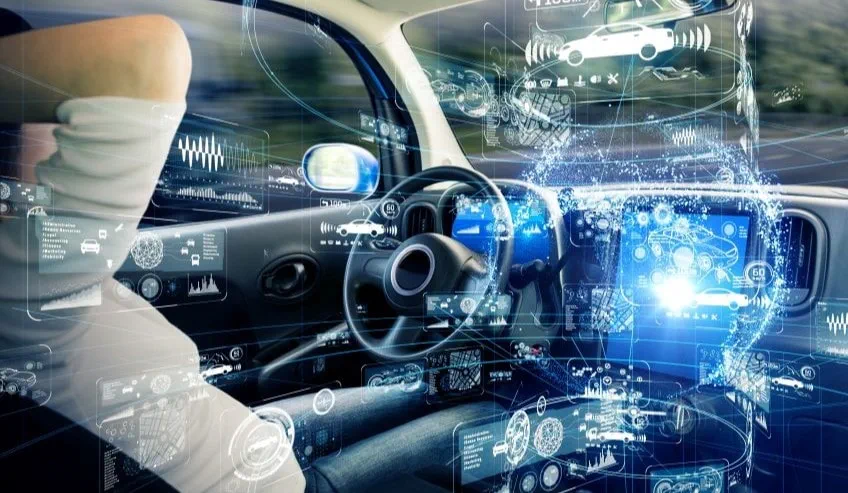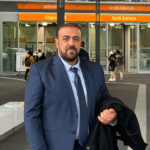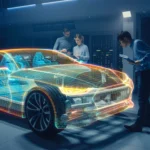
The automotive industry is on the brink of a transformative decade. By 2030, the way we design, manufacture, and use vehicles will be fundamentally different, driven by advancements in technology, shifting consumer preferences, and the urgent need for sustainability. From electric and autonomous vehicles to smart manufacturing and circular economies, the automotive landscape is evolving at an unprecedented pace. Here’s a glimpse into what the future holds for this dynamic industry.
The Electric Revolution
By 2030, electric vehicles (EVs) are expected to dominate the roads. Governments worldwide are setting ambitious targets to phase out internal combustion engine (ICE) vehicles, with countries like the UK, France, and Norway leading the charge. Automakers are responding by investing billions in EV development, with nearly every major manufacturer pledging to electrify their fleets.
The driving force behind this shift is the rapid advancement of battery technology. Solid-state batteries, which promise higher energy density, faster charging times, and improved safety, are expected to become commercially viable by the end of the decade. Coupled with the expansion of charging infrastructure, these innovations will make EVs more accessible and practical for consumers.
But the electric revolution isn’t just about passenger cars. Electric buses, trucks, and even two-wheelers are gaining traction, offering cleaner alternatives for public transportation and logistics. By 2030, electric mobility will be the norm, not the exception.
Autonomous Driving: A New Era of Mobility
Autonomous vehicles (AVs) are another cornerstone of the automotive industry’s future. While fully self-driving cars are still in the testing phase, significant progress is expected by 2030. Companies like Waymo, Tesla, and Cruise are at the forefront of this technology, developing systems that can navigate complex urban environments with minimal human intervention.
The benefits of autonomous driving are immense. AVs have the potential to reduce traffic accidents caused by human error, ease congestion through optimized routing, and provide mobility solutions for those unable to drive, such as the elderly and disabled. However, challenges remain, including regulatory hurdles, cybersecurity concerns, and the need for public acceptance.
By 2030, we can expect to see a mix of semi-autonomous and fully autonomous vehicles on the road, particularly in ride-sharing and logistics. The concept of car ownership may also shift, with more people opting for shared mobility services powered by autonomous fleets.
Connected Cars and Smart Cities
The integration of vehicles into the Internet of Things (IoT) ecosystem will redefine how we interact with our cars. By 2030, connected cars will be the norm, equipped with advanced sensors, cameras, and communication systems that enable real-time data exchange with other vehicles, infrastructure, and smart devices.
This connectivity will pave the way for smarter cities, where traffic lights, parking systems, and public transportation networks are seamlessly integrated. Imagine a world where your car communicates with traffic signals to minimize wait times or automatically finds and pays for parking. These innovations will not only improve efficiency but also reduce emissions and enhance the overall driving experience.
Sustainability at the Core
Sustainability will be a defining theme for the automotive industry in 2030. Beyond the shift to electric vehicles, automakers are embracing circular economy principles to minimize waste and maximize resource efficiency. This includes recycling materials from end-of-life vehicles, using bio-based and recycled materials in production, and developing closed-loop systems for battery manufacturing.
The industry is also exploring alternative fuels, such as hydrogen, for applications where electrification may not be feasible, such as long-haul trucking and aviation. By 2030, sustainability will no longer be a buzzword but a fundamental aspect of automotive design and manufacturing.
Challenges and Opportunities
While the future is bright, the road to 2030 is not without obstacles. The transition to electric and autonomous vehicles requires massive investments in infrastructure, from charging stations to smart road systems. Regulatory frameworks must evolve to address safety, privacy, and ethical concerns, particularly in the realm of autonomous driving.
Workforce transformation is another critical challenge. As the industry shifts toward electrification and digitalization, new skills will be required, from software engineering to data analysis. Automakers must invest in training and reskilling programs to prepare their workforce for the jobs of the future.
Despite these challenges, the opportunities are immense. The automotive industry in 2030 will be more innovative, sustainable, and inclusive than ever before. It will not only transform how we move but also contribute to a cleaner, safer, and more connected world.
Conclusion
The automotive industry is on the cusp of a new era, driven by innovation and a commitment to sustainability. By 2030, electric and autonomous vehicles will be commonplace, connected cars will redefine mobility, and sustainability will be at the heart of every decision. As we navigate this transformative decade, one thing is clear: the future of the automotive industry is not just about cars—it’s about creating a better world for generations to come.

Imad Ahmad Ali





